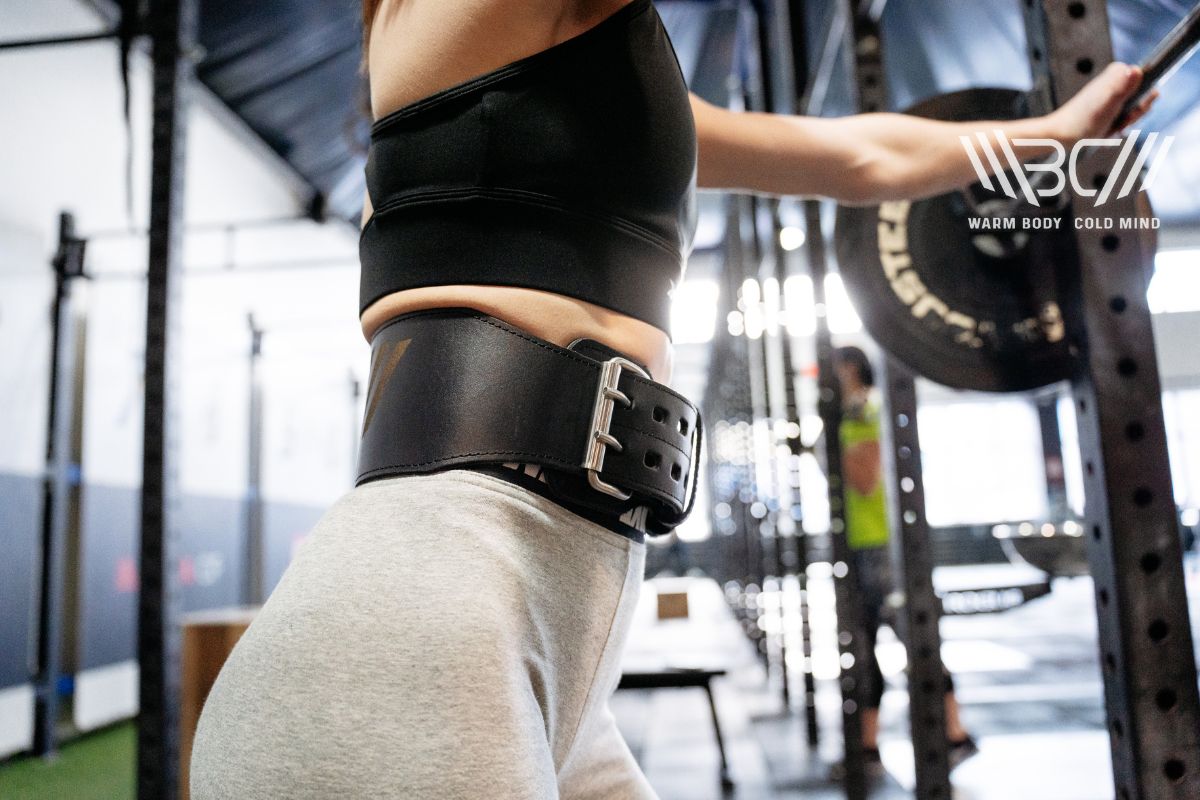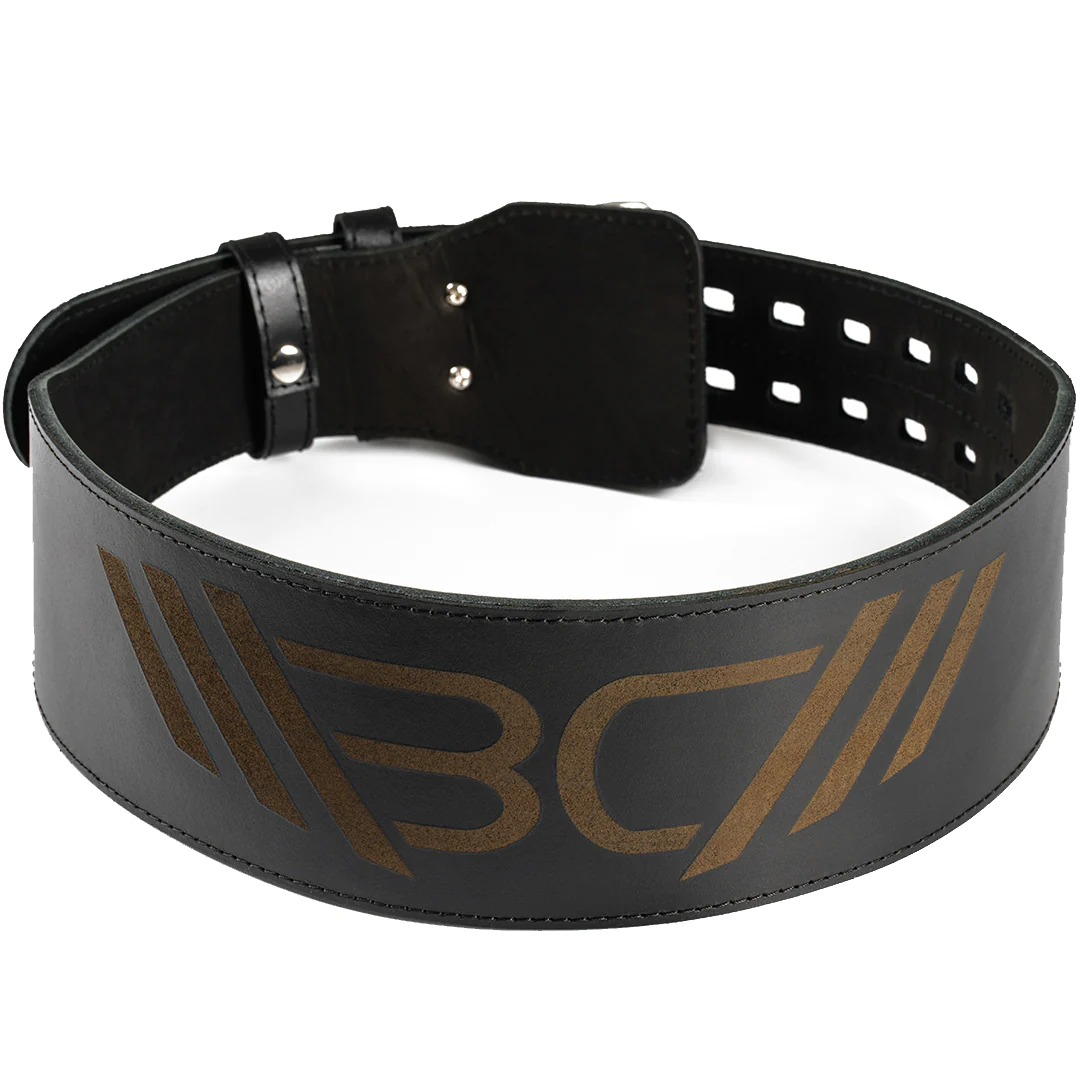Does Weight Lifting Belt Help Lower Back Pain?
MEDICAL WARNING: This article is for informational purposes only and is not intended to be a substitute for professional medical advice. If you experience any health problems while exercising or using supplements, consult your doctor.
Lifting weights is an excellent way to improve physical strength, boost bone mass, and prevent injuries. However, lifting incorrectly or too heavy can cause injuries.
You should ask “do weight lifting belts help lower back pain?” We’re about to tell how weightlifting belts can help.
Do Weight Lifting Belts Help Lower Back Pain? – Yes. Weight lifting belts help lower back pain by stabilizing your core. You contract your muscles better, increasing lifting capacity. A belt is useful for reducing pain, but it doesn’t resolve the cause of the pain, for that you need a doctor.
Why Weightlifters Often Have A Problem With Lower Back?
The main aim of a belt is as a weight lifting back brace. The belt is strapped tightly around your waist, increasing pressure inside your body. This helps you maintain posture, increases stability, and can decrease hypertension when you’re lifting overhead.
Many people who ask “do weight lifting belts help lower back pain” have experienced back pain and are looking for a way to keep lifting.

Research shows it’s common for weightlifters to experience lower back pain. Using a back support for lifting weights will help you to keep lifting. But, you need to identify the underlying cause and rectify it.
There are several reasons why weightlifters tend to have a problem with their lower back.
1. Lack Of Mobility
A recent study showed that weightlifters who regularly engage in other sports are less likely to have mobility issues.
A lack of mobility is often a result of little or no exercise or repetitive movements. For weightlifters, this means you are consistently doing the same lifts, and getting better at them, but you’re not doing anything different.
If you try any other type of lift you’re likely to find it difficult as your body won’t be used to bending and flexing in that way.
The good news is that a good lifting routine, with a back support belt for lifting weights, can help you boost mobility. The best approach is to complete compound exercises and focus on form.
Mobility can also be reduced when you lift too heavy. This will generally damage your form and increase the likelihood of an injury. When your body is injured, the area will be inflamed to protect it. This will reduce your mobility in that area.
2. Lack Of Stability
A weight lifting belt for a bad back is often the perfect way to help improve your stability. When you’re lifting weights, you need to constantly make small adjustments to your balance. This counteracts slight shifts in the weights, a result of your body moving.
If you have poor stability you’ll struggle with maintaining balance during lifts, regardless of whether you’re using barbells, dumbbells, or a machine. That means you’ll sway and are more likely to twist your body while lifting.
This damages form and can result in a back injury, simply because you don’t have enough stability. Research shows that failing to warm-up can make a big difference to stability and balance during lifts.
In short, warming up, undertaking a stability training program, and using a weight belt for back pain, can all help you avoid back injuries.

Enhance your strength training with Warm Body Cold Mind leather weightlifting belt providing exceptional support and durability.
3. Incomplete Mechanics
Incomplete mechanics simply means lifting with poor form. Weightlifting is a surprisingly complex exercise. It’s important to start light and focus on form before you increase your weight. As research shows, the right form is essential for successful lifts.
Failing to do this means poor form. That equates to twisting while lifting and placing additional strain on your body, increasing the likelihood of injury.
4. Lack Of Recovery
Injuries can happen in any sport, even with the correct form. When an injury occurs it needs to be properly treated. That usually means hot and cold compresses and rest.
Naturally, you’ll be worried about your lifting prowess and will be eager to start lifting again. That’s why many people ask do weight lifting belts help lower back pain.
While they can help you lift through pain, you’ll be masking the symptoms. A lack of recovery time will make it more likely you’ll do yourself a further injury.
As difficult as it can be, the best approach is to rest and recover completely.

5. Weak Posterior Chain
Your posterior chain refers to the muscles up the back of your body, from the heels of your feet to the base of your head.
The posterior chain covers most of the largest muscles in your body, including the ones used in most lifts. If this chain is weak you’ll struggle to complete lifts and are more likely to cause yourself an injury.
3 Benefits Of Wearing Weight Belt For Back Pain
There are several benefits to wearing a weight belt for back pain.
✅ Tactile Cue For Core Engagement
The pressure of a weight lifting back brace or belt against your skin can help you engage your core properly.
It works similarly to a trainer placing a hand on your lower back and asking you to push against it with your core.

Discover the strength of the Warm Body Cold Mind nylon lifting belt. Lightweight and durable, it provides optimal support for your workouts.
✅ Extra Support For Heavy Lifts
A good back support belt for lifting weights will prevent your spine from bending forward, backwards, or to the side. Holding it rigid means you’ll be forced to lift with your legs.
That will increase the amount you can lift.
✅ Reduced Injury Rates
The belt will improve your form. As lifting with the correct form is essential to avoiding injury and preventing back pain, a belt is an excellent idea when lifting heavy.
Simply wearing the belt will improve your form.
Our Recommendation of Best Weight Belts for Lower Back Support
There are plenty of options when looking for a weight lifting belt for a bad back. Fortunately, we have two excellent choices available:
1. WBCM Leather Weightlifting Belt
The WBCM leather weightlifting belt comes in black and is made of high-quality A-grade leather. It’s four inches wide and has a reinforced buckle system.

The belt comes in a variety of sizes ranging from small (28”-35”) to XL (41”-52”). It’s comfortable, easy to use, and offers excellent support.
2. WBCM Nylon Weightlifting Belt
We also offer a WBCM nylon weightlifting belt. It’s a little cheaper than the leather option and is available in pink, green, blue, or black. It’s a great choice for beginners.

It’s also available in sizes small to XXL. The belt is made of premium nylon, four inches wide, and uses a high-quality metal clasp with a self-locking system.
How To Wear Belt Correctly?
When asking “do lifting belts help with back pain” then the answer is yes, but only if they are worn correctly.
You’ll need to tighten the belt around your waist at the same height as your belly button. Make sure it’s tight enough to make it uncomfortable but not excessive.
Once strapped on, push your core against the belt. The belt shouldn’t move and should feel solid. This will help as a tactile cue and improve your ability to lift heavier.
- Once tightened make sure you can expand your abdomen a little bit. If not, loosen it slightly.
- Breathe in deeply as you tighten the belt, it will help you get the right tightness
- It should be above the hip bone and over the belly button
How To Deal With Low Back Pain In Weightlifting?
Low back pain can occur when you first start lifting as your body adjusts to the new movement. It can also occur if you’ve lifted too heavy or with poor form. The following will help you deal with the pain:
- Stop exercising and apply ice to the lower back area. You can alternate with heat
- Rest, ideally stop lifting for 3-5 days
- Use muscle relaxing meds
- Have a soft tissue massage
- Undertake light lifts or alternate exercises to maintain strength and flexibility

Use Lifting Belt For Lower Back Pain
After the initial rest, you can start lifting again with the help of a lifting belt.
Just follow these tips:
- Fit the belt correctly
- Lift lighter and focus on form
- Gradually increase the load
FAQ
Does A Lifting Belt Protect Your Back?
Yes. A lifting body compresses your body, improving your rigidity and stability. As your body is moving in the correct form you’re less likely to sustain a back injury.
Can I Use a Lifting Belt as a Back Brace?
There’s a big debate regarding back brace vs weight lifting belt. The main difference is what they are designed to do. A back brace supports the back after an injury, it can be worn all the time.
In contrast, a lifting belt is tighter and more restrictive. It helps you lift weights even with a back injury but can’t be worn for long periods.
In short, no it’s not advisable to use a lifting belt as a back brace.
Do Back Belts Prevent Injury?
A back belt will not prevent an injury from occurring. However, the support they offer means there is a decreased chance of injury.
Does A Lifting Belt Make Your Back Stronger?
A lifting belt encourages you to use the proper form when lifting. This will help you lift heavier without injury. Naturally, lifting heavier means your body will get stronger. That includes your back.
A lifting belt indirectly makes your back stronger.
Conclusion
Do weight lifting belts help lower back pain? Yes. They also prevent back injury.
Whether you’re a professional weightlifter or just starting out, order one of our recommended ones today and see the difference.
Don’t forget to share your thoughts or any questions, we want to know what you think!
References:
- Fares, M. Y., Fares, J., Salhab, H. A., Khachfe, H. H., Bdeir, A., & Fares, Y. (2020). Low Back Pain Among Weightlifting Adolescents and Young Adults. Cureus, 12(7). https://doi.org/10.7759/cureus.9127.
- Ross, Ruby BS; Han, Julie MD; Slover, James MD, MS. Chronic Lower Back Pain in Weight Lifters: Epidemiology, Evaluation, and Management. JBJS Reviews 11(6):e22.00228, June 2023. | DOI: 10.2106/JBJS.RVW.22.00228.
- Pfeifer, C. E., Ross, L. M., Weber, S. R., Sui, X., & Blair, S. N. (2022). Are flexibility and muscle-strengthening activities associated with functional limitation? Sports Medicine and Health Science, 4(2), 95-100. https://doi.org/10.1016/j.smhs.2022.03.001.
- Adelsberger, R., & Tröster, G. (2014). Effects of stretching and warm-up routines on stability and balance during weight-lifting: A pilot investigation. BMC Research Notes, 7. https://doi.org/10.1186/1756-0500-7-938.
- Mastalerz, A., Szyszka, P., Grantham, W., & Sadowski, J. (2019). Biomechanical Analysis of Successful and Unsuccessful Snatch Lifts in Elite Female Weightlifters. Journal of Human Kinetics, 68, 69-79. https://doi.org/10.2478/hukin-2019-0057.
Author: Sergii Putsov
PhD in Sport Science, Olympic weightlifting, Strength & Conditioning coach and fitness expert
Sergii Putsov is a professional weightlifter with over 20 years of experience and multiple national medals. He was a member of the National weightlifting team, competing in the 94 kg weight class. Sergii holds a master’s degree in Olympic & Professional Sport Training and a Ph.D. in Sport Science. After his athletic career, Sergii transitioned into coaching and is now responsible for designing training programs, writing blog articles, providing live commentary for international weightlifting competitions, and hosting sport and fitness seminars worldwide.












